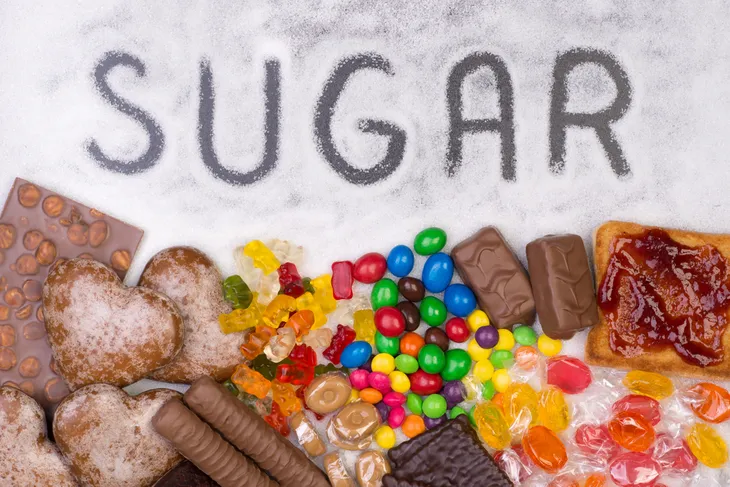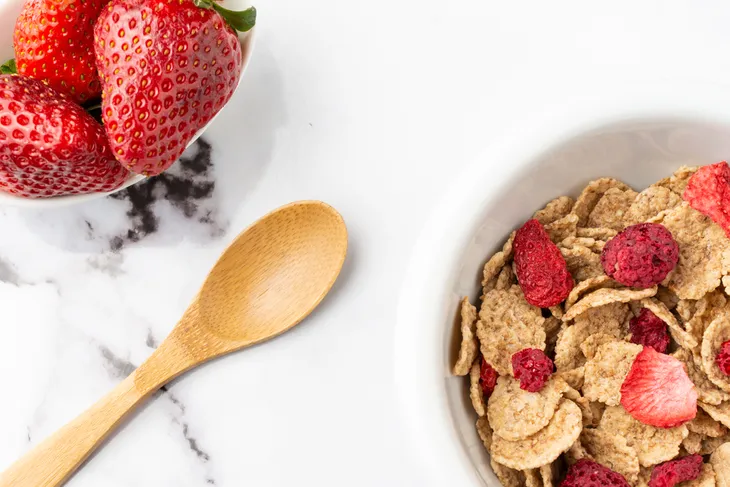- Navigating the grocery aisles can be a challenge but the first step in choosing a healthy breakfast cereal is to read the nutrition label.
- A healthy breakfast cereal should be low in added sugar, sodium, and saturated fat. It should also be a good source of whole grains, protein, and fiber.
- There are easy ways to add more nutrition and flavor to your healthy breakfast bowls, such as adding fresh fruit, nuts, and cinnamon.
Breakfast is one of the most important meals of the day because it replenishes your supply of glucose to provide your body with energy. It also helps provide essential nutrients your body needs to stay healthy. One popular breakfast option is cereal. While the cereal aisle is loaded with options, not all breakfast cereals are created equal. Some are loaded with sugar and other unhealthy ingredients, while others offer essential vitamins, minerals, and other ingredients your body can thrive on. Navigating the grocery aisles searching for healthy options isn’t always easy, so it’s important to get informed.
Read the Label
The first important step in choosing a healthy breakfast cereal is to read the nutrition label and ingredients. It’s not uncommon to see misleading marketing claims such as “low-fat” or “whole-grain” listed on the front of the box while the ingredients list states otherwise.
Healthline says, “studies show that these health claims are an effective way to mislead people into believing that these products are healthier.” By reading the list of ingredients, as well as the nutrition label you can make an informed choice.
Choose a High-Fiber Cereal
One important nutrient you should pay attention to when choosing a breakfast cereal is fiber. Fiber is an important nutrient that supports your digestive system, helps regulate the body’s use of sugars, manages cholesterol levels, and may help lower the risk of some diseases.
Women need around 21 to 25-grams of fiber per day, while men need about 30 to 38-grams. While your breakfast cereal won’t contain all the fiber you need in a day, Dietician Lori Zanini tells WebMD, you should choose a cereal that has at least 5-grams of fiber per serving. You can also use the carbohydrate-to-fiber rule. For every 10-grams of carbohydrates, there should be at least 1-gram of fiber. This method can help pick out the best option.
High Protein
Protein is another important nutrient of a healthy meal. Every cell in your body contains protein and the National Library of Medicine explains, “you need protein in your diet to help your body repair cells and make new ones.”
Protein also helps you feel full for longer, which is another reason why you’ll want protein in your breakfast. The Cleveland Clinic explains healthier breakfast cereals will typically have closer to 10-grams of protein per serving.
Consider Whole Grains
Skip the cereals that are loaded with refined grains and choose a cereal that is made with whole wheat, whole-grain oats, or whole-grain brown rice. Whole grains are higher in fiber and protein, which we already know are an important part of kick-starting your day.
Whole grains are also rich in other essential nutrients like iron, magnesium, and B vitamins. In addition to providing your body with essential nutrients, whole grains may also help reduce your risk of heart disease, diabetes, and other illnesses. They may also help you manage your weight.
Choose Low Sugar
Let’s be honest, some cereals should really be relocated to the dessert aisle. A lot of that irresistible sweet flavor is attributed to the high amounts of added sugar. But if you want a nutritious breakfast that fills you up and fuels your morning, you really should steer clear of the high-sugar breakfast cereals.
The Cleveland Clinic offers a quick tip, “don’t pick cereals with sugar listed in the top three ingredients.” The source also notes you should watch out for “sugar imposters” on the ingredient list. Some of these include glucose, high fructose corn syrup, maltodextrin, and evaporated cane juice. As a good rule of thumb, the source says to look for low-sugar cereals with less than 6-grams of added sugar per serving.
Keep It Low Fat
Sugar isn’t the only culprit you need to look out for. You should also watch out for cereals with high fat, especially saturated fats. A diet high in saturated fat may raise “bad” LDL cholesterol in your blood, which can increase your risk of heart disease and stroke, says the National Health Service.
When shopping for cereal, WebMD says to choose one that contains no more than 3-grams of fat. Keep in mind, cereals that contain nuts will likely have more fat than plain cereals.
Low Sodium
Even if your favorite cereal has a super sweet flavor, it can still be loaded with sodium. In fact, WebMD points out some cereals contain more than 500-milligrams per serving. By the way, the U.S. Food and Drug Administration (FDA) says adults should consume less than 2,300 milligrams per day.
The reason you should be wary about high amounts of sodium is that too much sodium in your diet can raise blood pressure and may increase your risk of heart disease and stroke. When shopping for a healthy breakfast cereal, WebMD recommends choosing one that contains less than 220-mg of sodium per serving.
Other Ingredients to Avoid
Sugar and sodium aren’t the only ingredients you need to watch out for. Some breakfast cereals can be loaded with other unhealthy (and sometimes hidden) ingredients that you’re better off avoiding.
For starters, you may want to avoid cereals that contain artificial flavoring and colorings. These additives don’t benefit your body in any way, and there are other easy ways to provide flavors to your cereal. Healthline also says, be on the lookout for all the different names of sugar. Sometimes sugar is listed several times but under different names. If this is the case, it’s a good indicator that the product is very high in sugar.
Be Mindful of Portion Sizes
Another thing to be mindful of when choosing a healthy breakfast cereal is the serving size. The serving sizes listed on the nutrition label are often much smaller than what people eat. So, if the serving size is 1/2-cup and you eat 1-cup of cereal, make sure you multiply the nutrition information by 2 for a more accurate understanding of what you’re putting into your body.
Kristen Smith, RD, a dietitian for the WellStar Comprehensive Bariatric Program in Atlanta, tells WebMD to choose a cereal that has 200-calories or less per serving. To stick to the recommended serving size, use a measuring cup to portion out your cereal.
How to Make Cereal Healthier
Along with sticking to the recommended portion sizes, there are other ways you can make your cereal healthier. For starters, Verywell Fit says you can swap out regular milk for low-fat milk or almond milk to cut calories.
If your healthy cereal is lacking flavor and you just can’t stomach it, consider adding in flavorful (but still healthy!) seasonings such as cinnamon, nutmeg, or pumpkin spice. You can also consider adding in a sprinkle of dark chocolate chips which are a good source of antioxidants — just don’t overdo it. Let’s take a look at a few other healthy toppings you can add to your breakfast bowl.
Nuts and Seeds
If you want to add even more nutrients to your healthy bowl of cereal, consider sprinkling nuts and seeds on top. Nuts can provide added protein, fiber, and heart-healthy fats. However, they can be high in calories, so don’t overload your bowl. You can also consider stirring a spoonful of nut butter into hot cereal for added protein and flavor.
Seeds can also add a boost of protein and flavor to your bowl. Flaxseeds specifically are also loaded with healthy omega 3s that can help build and maintain a healthy body. They also blend well in hot cereals such as oatmeal.
Fruit
If you’re craving something sweet but want to keep your breakfast healthy, consider adding sliced fruit to your cereal. Fruit like raspberries, blueberries, and strawberries are deliciously sweet and low in calories. They’re also chock-full of other good-for-you nutrients like antioxidants, vitamin C, and fiber.
Other delicious fruit toppings include sliced peaches, apples, and bananas. Enjoy the great taste without the added sugar and artificial colors!
Add Protein
We already know that protein is an essential nutrient the body needs and a key element of a filling breakfast, but if your cereal is lacking protein there are ways to add it to your bowl! For starters, swap your regular bowl of cereal and milk for a breakfast parfait. To do this, simply swap milk for Greek yogurt and combine it with your favorite healthy and crunchy cereal. Add fresh fruit or nuts on top for even more flavor and added nutrition.
You can also enjoy your bowl of cereal with a side of protein such as a hard-boiled egg, or a slice of whole-grain toast with natural nut butter, says Verywell Fit. There are plenty of easy ways to turn your breakfast into a healthy meal to fuel your morning!
















